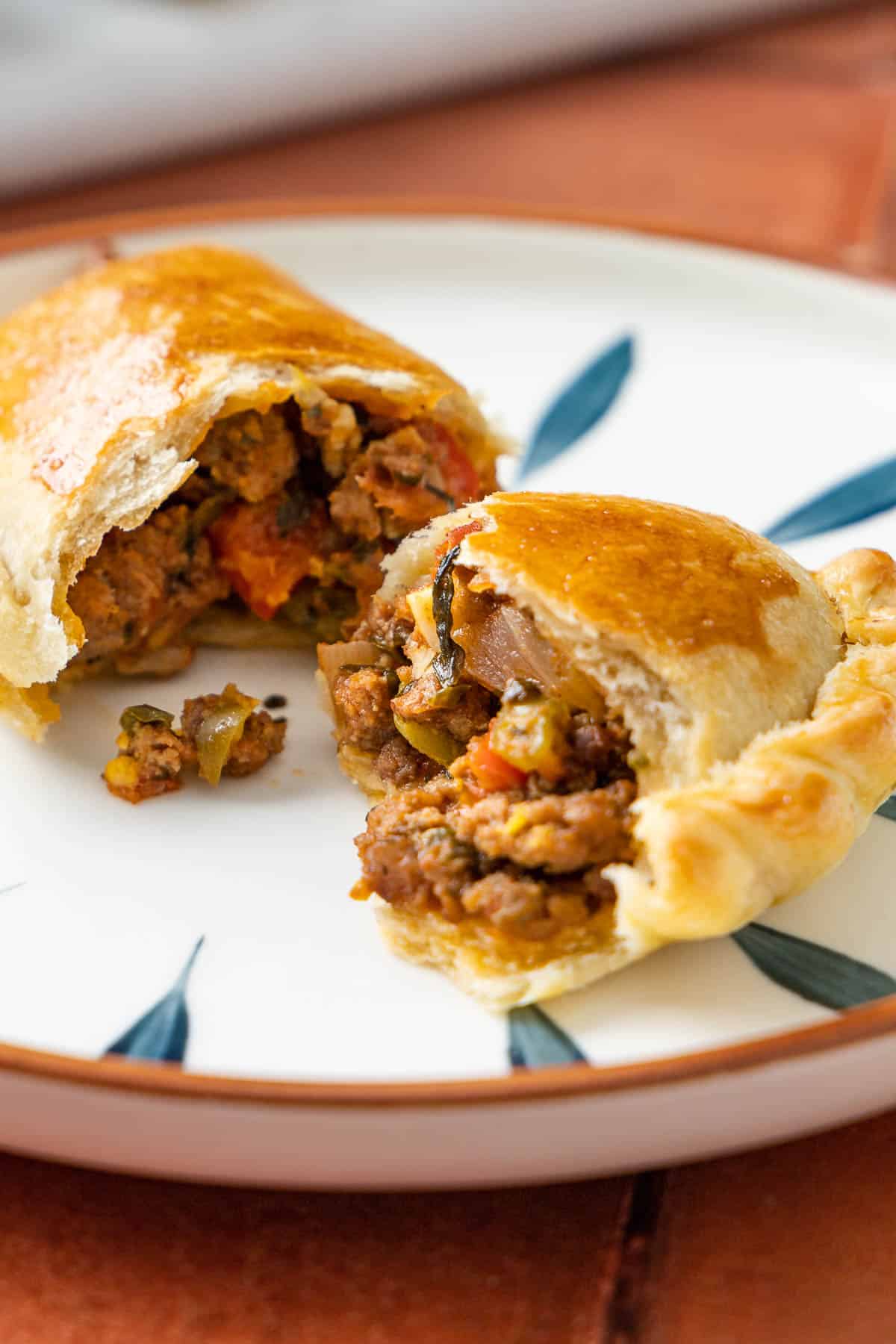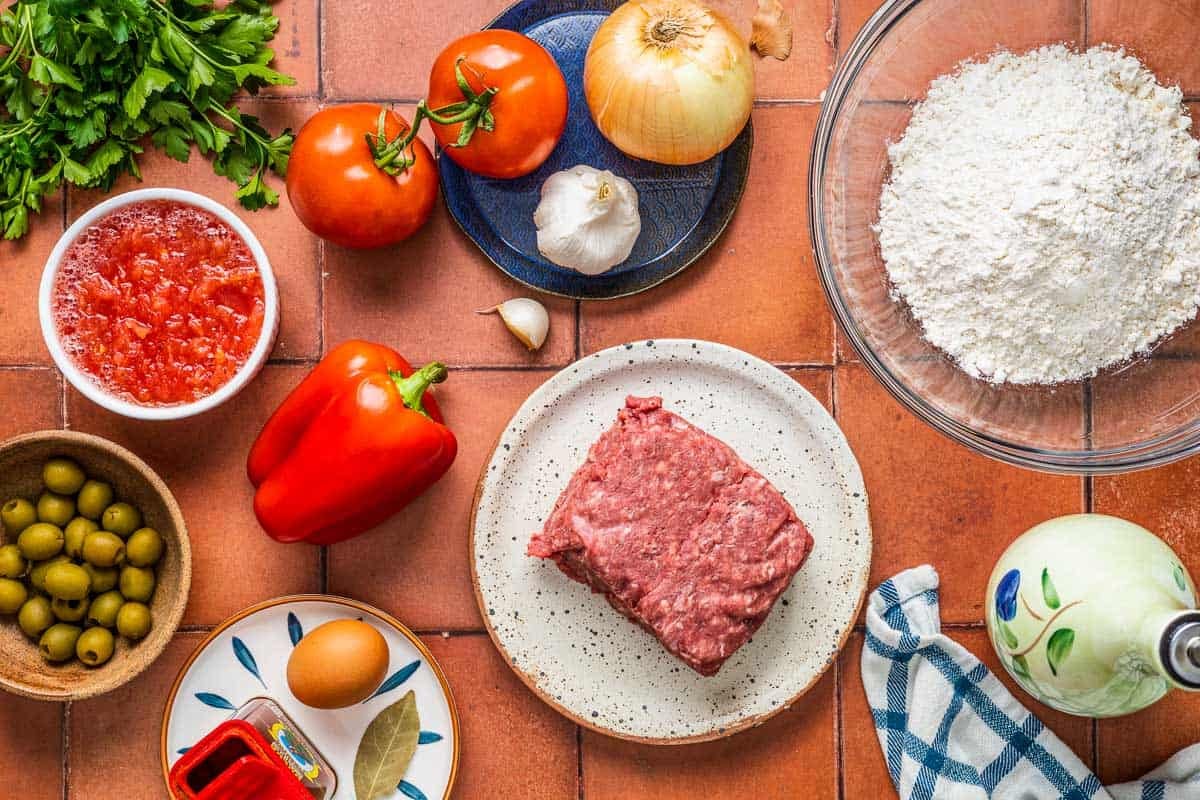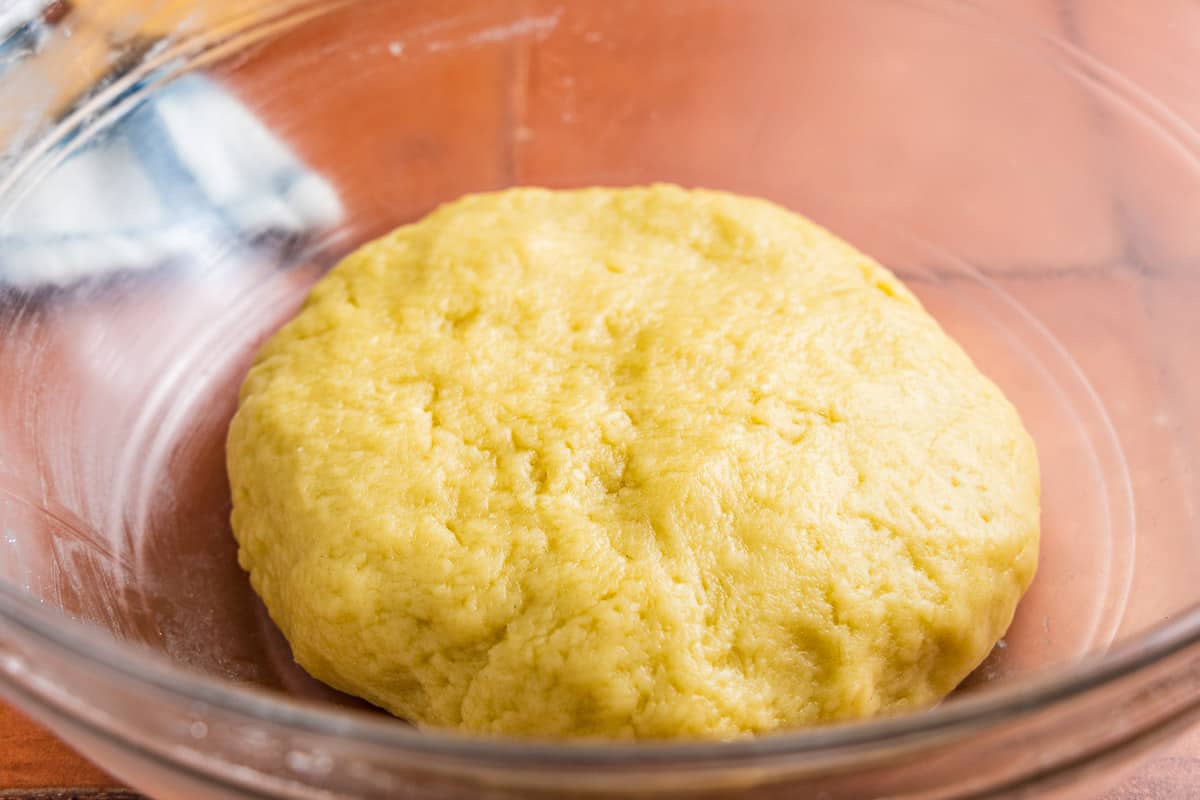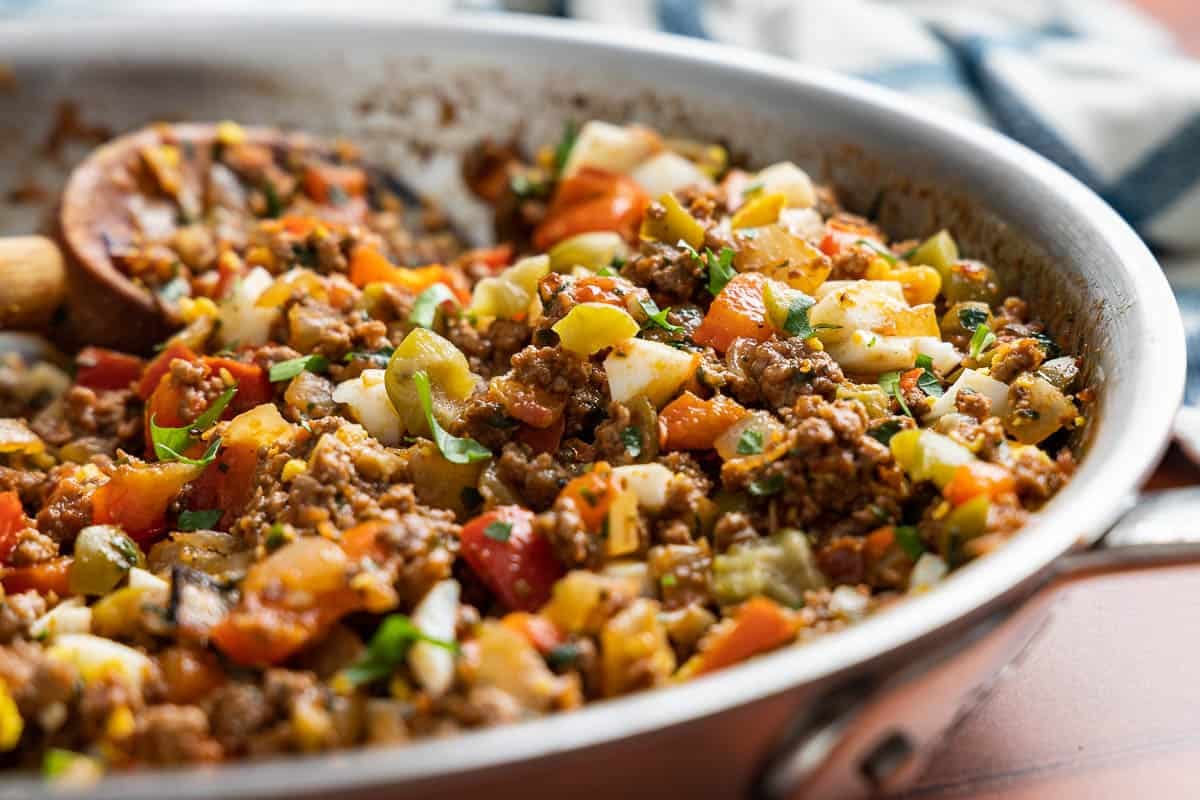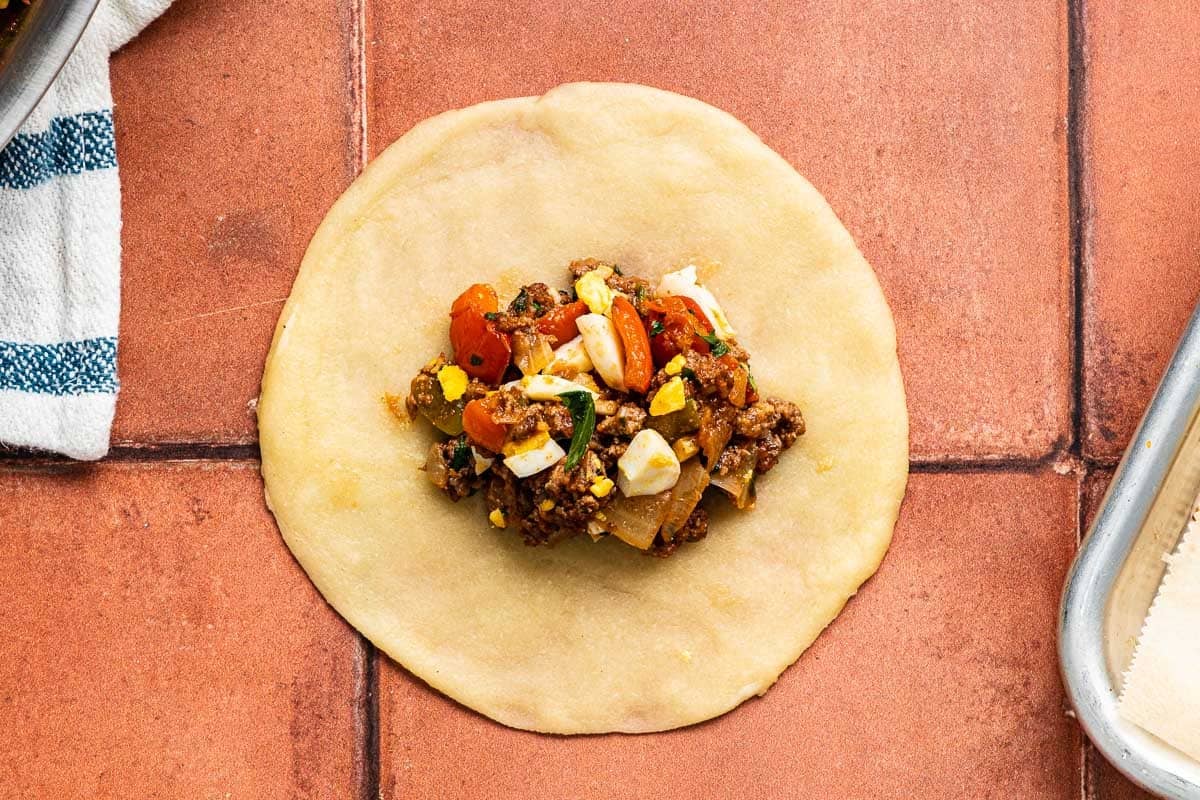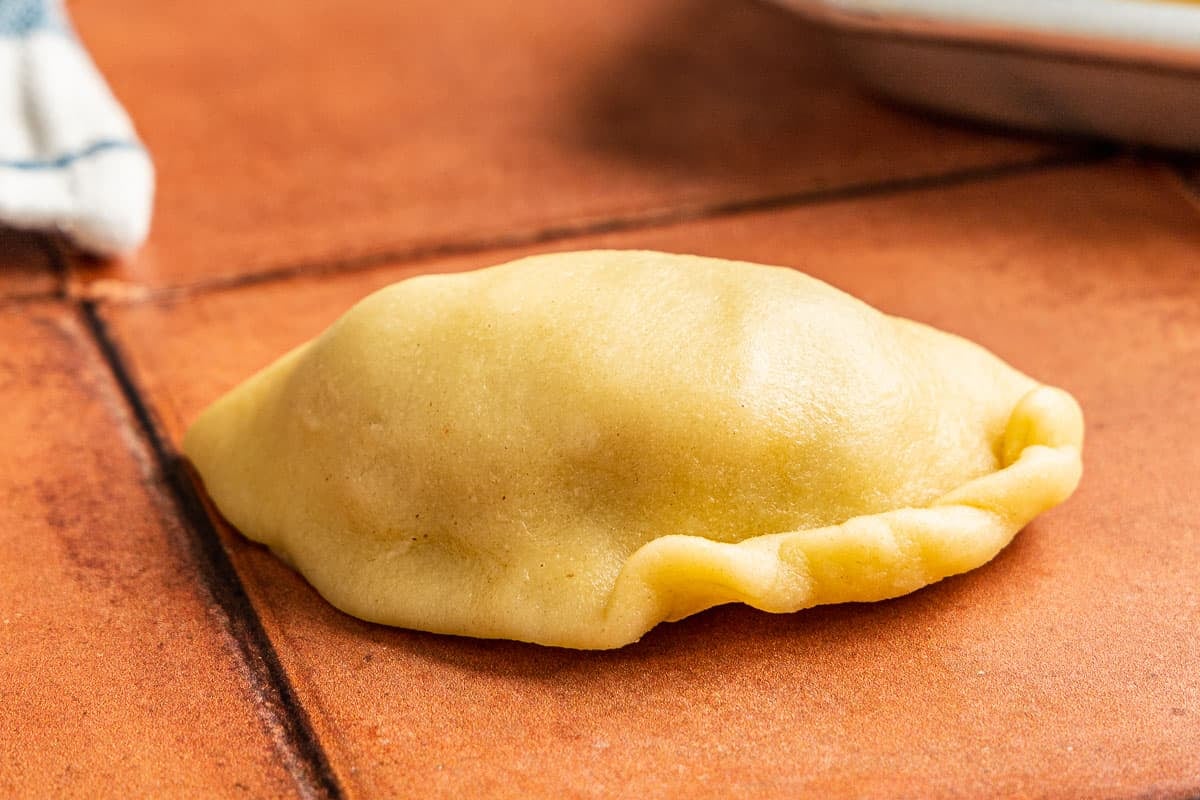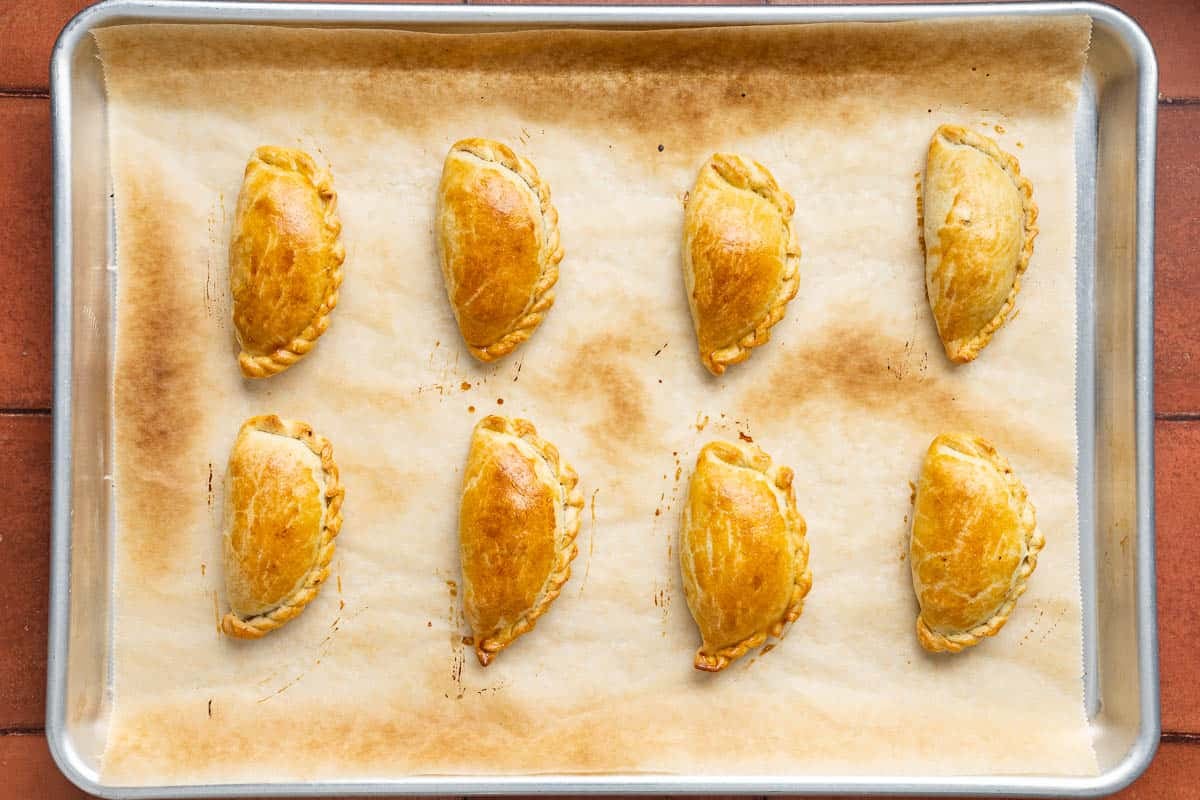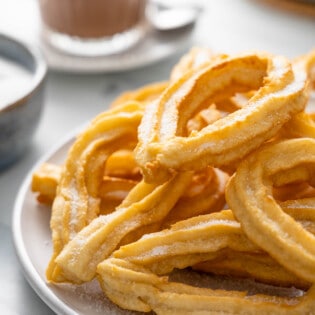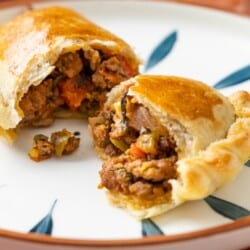When I lived in Barcelona, I found that the merienda, or afternoon snack, was essential. It helped to carry me to a very late Spanish dinner (usually 9 or 10pm). I would visit a café near my apartment in the old city, where I could enjoy a coffee and merienda while people-watching in the square. Empanadillas often called my name on the pastry shelf where they had freshly made treats. When my sweet tooth wasn’t calling for churros and Spanish hot chocolate or fig cake, I went savory with empanadillas. They were just the right size for a snack. And, if I was really hungry, I could sample many of the enticing fillings. One of my favorite empanadilla fillings was ultra-savory ground beef spiced with smoky Spanish paprika. I’ve recreated them here, in a baked version that’s easy to make at home. With 16 empanadillas, this recipe makes plenty for sharing. They’re especially welcome as part of a large tapas spread with sangria and patatas bravas and pan con tomate. You can even freeze them and pop them in the oven for an easy dinner on a busy day.
Food Stories: Empanadillas vs. Empanadas
If you order an empanada in Spain, you may be surprised when a large slice of tuna pie shows up at your table. In Spain, empanada usually refers to a large savory pie, typically filled with tuna, baked in a slab or a round and sliced to serve. The suffix, “illa” implies that something is small, so empanadillas are single serving and hand-held, like Latin American empanadas. While empanadas originate in Galicia on the Atlantic coast of Spain, many people in the U.S. are more familiar with Latin American empanadas. They were brought by the Spaniards to the Americas, where they incorporated local ingredients and tastes for countless new variations. One of the most notable differences between Spanish empanadillas and Latin American empanadas is the spices and flavorings used in the filling. Spanish empanadillas get their sweet, smoky, and savory flavor from Spanish sweet paprika and sofrito, an aromatic base of sautéed onions and tomatoes. Spanish empanadillas are typically fried, but they can be baked instead, especially when prepared at home. The ground beef filling in this recipe is a second favorite after the ubiquitous tuna empanadas.
What You’ll Need to Make Empanadillas
Like many Spanish recipes, these beef empanadillas rely on sofrito as their flavor base. Sofrito typically starts with sautéed onions and tomatoes and can include peppers, garlic, herbs, and spices.
Olive oil: Use extra virgin olive oil, preferably Spanish. The olive oil coats the flour to make a tender dough. Salt and pepper: Heighten the flavors of the other ingredients, with the pepper adding a subtle warmth. All-purpose flour: Create a tender dough strong enough to hold in the fillings. Onion: Use a milder, sweet onion like Spanish, Vidalia, or Walla Walla. Red bell pepper: The sweetness of chopped red bell pepper complements the beef and the paprika. Bay leaf: Piney bay leaf is subtle but essential for rounding out the flavor. Ground beef: Use lean ground beef. Sweet paprika: Spain is famous for its sweet and smoky paprika, or pimentón, produced in la Vera. I like sweet Spanish paprika for this recipe, but smoky would work as a substitute. Tomatoes: Grate fresh tomatoes on the coarse side of a grater. Use both the flesh and the juice, but discard the skin. Or, you can substitute with 1 cup of canned crushed tomatoes. Garlic: Spanish food almost always includes some garlic because it’s delicious. Fresh parsley: Fat-leaf parsley adds a bright and herbaceous aroma. Hard boiled egg: A traditional, but optional, addition to the filling. Eggs were used to enrich the filling and replace some of the beef. They’re a protein-rich food and historically cheaper than meat and seafood. Green olives: Add pops of brininess to the filling.
How to Make Beef Empanadillas
Empanadillas involve a bit of hands-on time. Plan for about 2 hours, but your work will be rewarded. With 16 empanadillas, this recipe makes plenty to share or save for later. I also find that sealing and crimping them can be meditative.
Make the dough: Combine the olive oil, water, and salt, then gradually add in the flour, stirring with a wooden spoon. Once the dough comes together, switch to kneading by hand until the dough no longer sticks to your hands or the counter, 1 to 2 minutes. Let the dough rest, covered, while preparing the filling.
Make the filling: In a large frying pan, heat the olive oil over medium heat until shimmering but not smoking. Add the onion, red pepper, and bay leaf and cook until they soften and begin to caramelize. Add the ground beef, salt, and paprika. Cook for 4 minutes, stirring to break up the beef, until browned. Add the tomatoes, reduce the heat to low, and cook for 8 to 10 minutes, until almost all the liquid has evaporated. Add the garlic and parsley and cook for 1 minute until fragrant. Take the pan off the heat and stir in the chopped hard-boiled egg and olives. Set aside until cool enough to handle.
Shape and fill the dough: Divide the dough into 16 equal pieces. Working with one piece of dough at a time, use your palms to press each ball of dough into a circle about 5 inches in diameter. Add about 2 tablespoons of filling to the center of the dough.
Fold and seal the empanadillas: Fold the dough over the filling and gently seal the edges with your fingers. Use your fingers to form the crimp by twisting and folding the edges together.
Bake: Arrange the empanadillas on the lined baking sheets. Brush the top of each empanadilla with the egg wash. Bake for 20 minutes, or until golden brown, rotating the pans and switching shelves halfway through.
How to Store Empanadillas
Store leftover empanadillas in an airtight container in the refrigerator for up to 4 days. Reheat them at 350°F for about 15 minutes, or until warmed through. This retains the texture of the crust. Beef empanadillas can also be frozen for up to 3 months either before baking, or after. In either case, freeze in a single layer on a sheet pan. Once frozen, transfer to a freezer bag or freezer-safe container. For uncooked frozen empanadillas, bake from frozen at 400°F until cooked through, about 25-30 minutes. Rotate the pans and switch shelves halfway through baking To reheat cooked frozen empanadillas, bake in a 350°F oven for 15 minutes.
Make it a Meal
Eat empanadillas as a snack turn it into a larger affair. Enjoy two of these mini hand pies with a fresh salad or a bowl of Spanish Gazpacho. Eating your meal while sipping wine and people watching in a townsquare is entirely optional!
More Scrumptious Spanish Recipes
Browse all Mediterranean recipes. Visit Our Shop.
Gambas al Ajillo (Spanish Garlic Shrimp)
Churros con Chocolate (Spanish Churros with Chocolate)
Pan Con Tomate (Spanish Tomato Bread)
Easy Spanish Tortilla Recipe
Add a peppery kick to your Empanadilla dough with our Hojiblanca EVOO from Andalusia.



